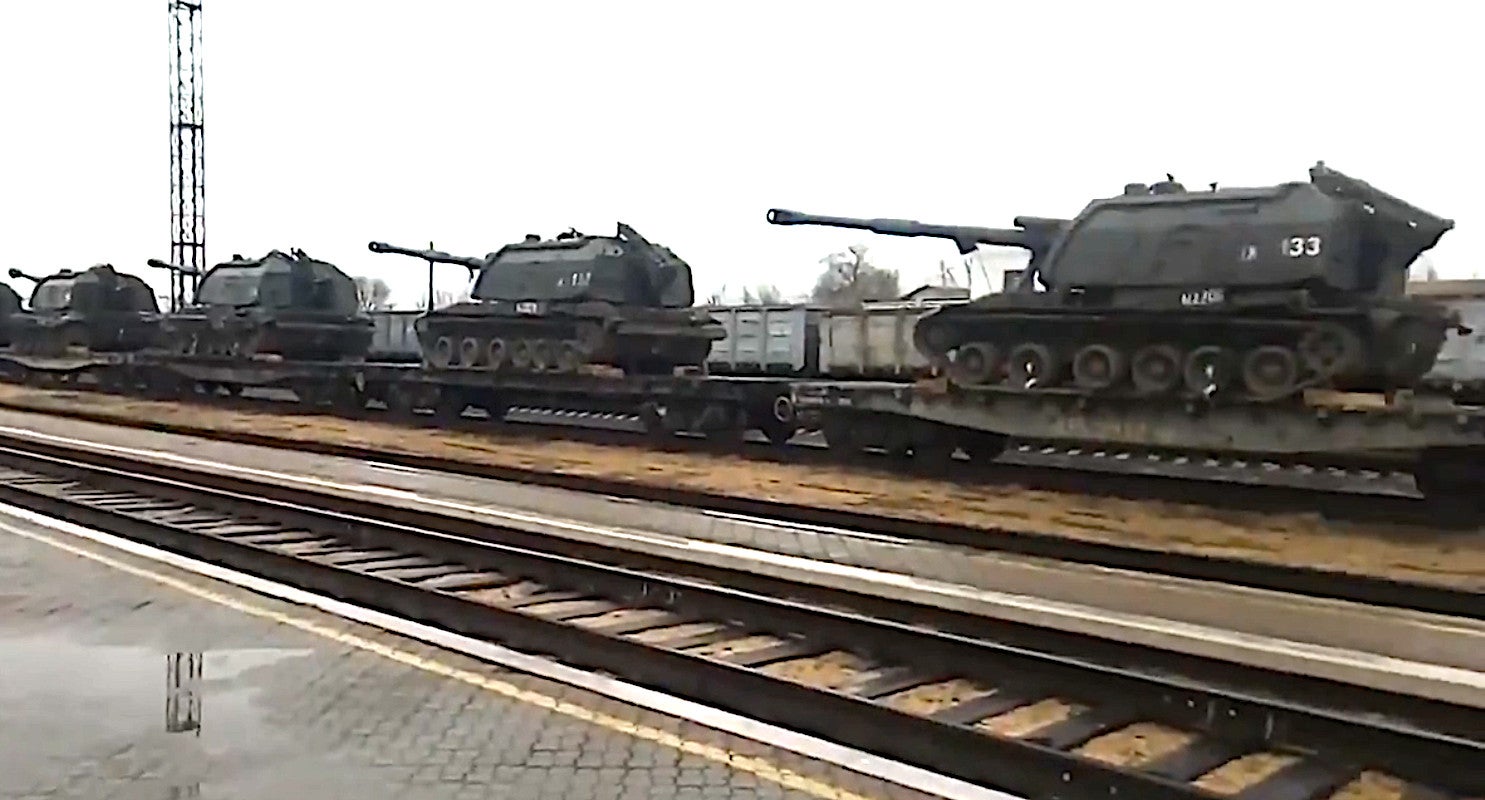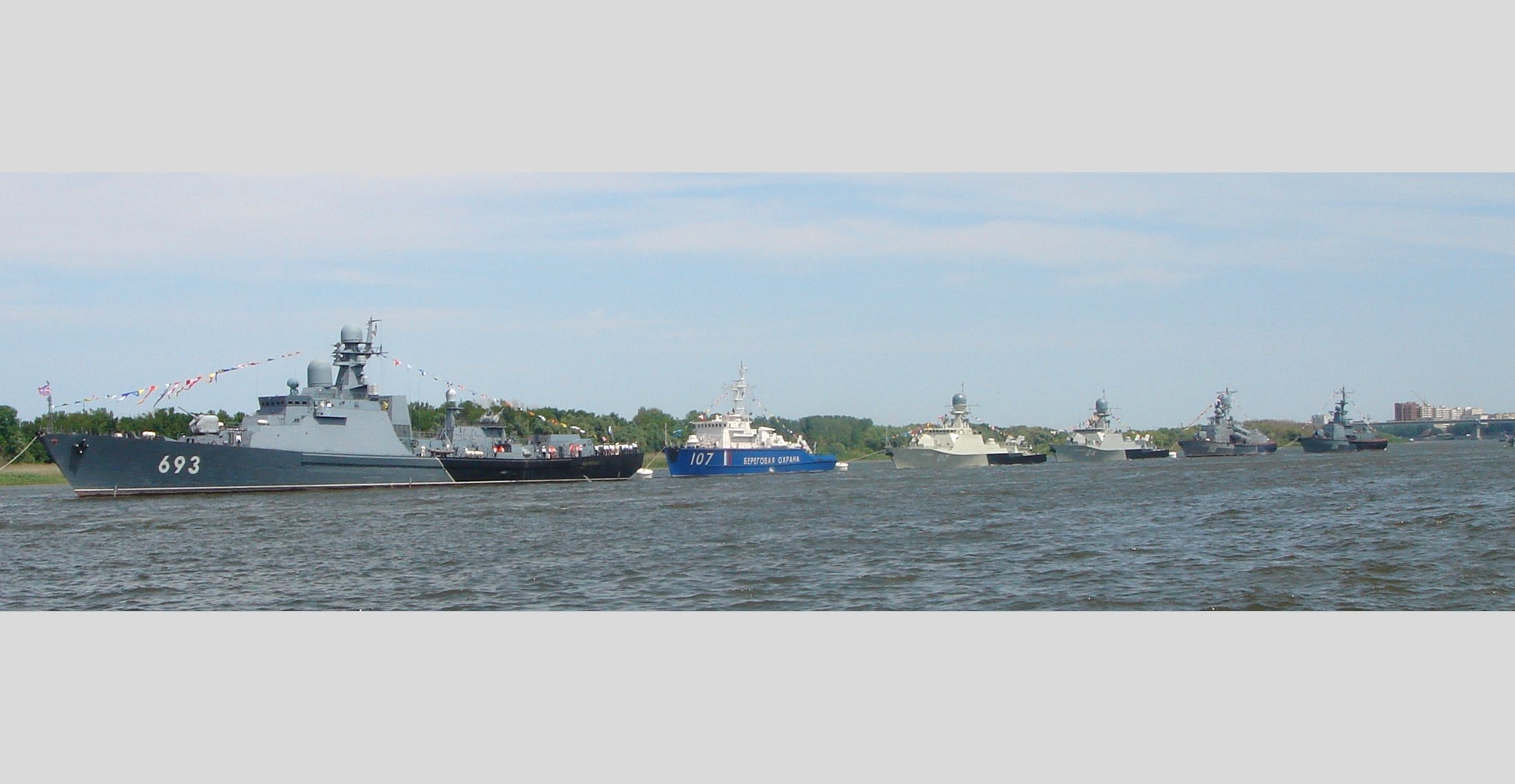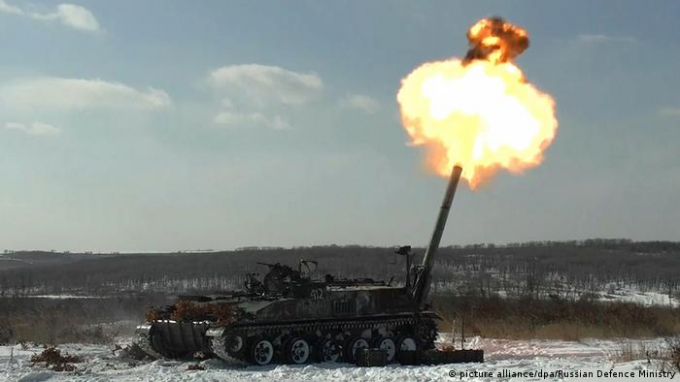As both sides accuse each other of initiating the present clashes (see EDM, April 5), talk is growing in Moscow, Kyiv, and in occupied Donetsk and Luhansk of a major escalation that may dramatically upend the present stalemate: Either the Ukrainian military will move forward decisively to reach the Russian border and push the Moscow-backed forces out of Ukrainian territory, or the Russians will use the pretext of resumed fighting to massively go in, defeat the Ukrainians and dramatically extend their zone of control.
The winter snow is swiftly melting on the East European (a.k.a. Sarmatic) Plain, with rivers and creeks overflowing. The spring Rasputitsa, or mud season, is in full swing, effectively prohibiting offensive maneuverable mechanized warfare in Donbas and surrounding areas. But sometime by mid-May, the fields and dirt roads will dry up and a “big war” in and around Donbas will again be possible (see EDM, March 11).
Since the beginning of the conflict in 2014, Moscow’s proxy militias in Donbas have developed into regular military units—the 1st Corps, with headquarters in Donetsk, and the 2nd Corps in Luhansk. Both are under the operational control of Russia’s 8th Guards Army of the Southern Military District (SMD), with headquarters in Novocherkassk, on the Russian side of the border.
The main battle force of the 8th Guards Army is the 150th Motor Rifle Division, recreated in 2016 and deployed in garrisons on the Russian side of the border with eastern Ukraine—in essence, a double-sized mechanized division of six regiments and six additional separate battalions, with hundreds of tanks and other heavy assets and over 10,000 men under arms. The 150th is the main operational reserve of the 1st and 2nd corps.
—ChF), and the Caspian Flotilla (Kaspiyskaya Flotiliya—KF). According to reports, the maneuvers were organized “to test battle-readiness and inter-service coordination” (Militarynews.ru, March 21).
The SMD has over 50 permanent-readiness battalion tactical groups (BTG), 50 tactical VKS squadrons and some 50 warships of the ChF and the KF, nuclear-capable heavy field artillery, along with ballistic and cruise missiles (TASS, April 6). Today, these forces are on the move or already deployed in forward positions on the Ukrainian border and in occupied Crimea. The 22nd Army Corps is permanently deployed in Crimea as part of the Coastal Troops of the ChF. The 126th Permanent-Readiness Brigade, armed with modern Russian T-72B3 tanks, is the main offensive asset of the 22nd Corps, together with the 127th Special Forces (Spetsnaz) Brigade. Elements of the 7th Mountain Division of the Airborne Troops (Vozdushno-desantnye voyska—VDV) and other reinforcements have been moved to Crimea, where they are exercising airborne and sea-landing assaults, utilizing tanks and other heavy equipment (Militarynews.ru
, March 18).
On March 21, media outlets revealed that three large Cold War–era, Polish-built landing ships of the Baltic Fleet—the Minsk, Korolev, and Kaliningrad—steamed south through the British Channel, escorted by a single corvette, apparently heading to the Black Sea, possibly with marines and tanks onboard (Militarynews.ru, March 21).
On April 8, officials announced that ten high-speed landing and artillery ships of the KF were being moved from the Caspian Sea, through the Volga and Don rivers, the Volga-Don Canal, and the Sea of Azov, into the Black Sea to run exercises (Interfax, April 8).
—VMF) could be gathering some 30 land-assault and support ships in the Black Sea for a possible large-scale landing from sea and air as part of a “deep” strategic offensive, possibly targeting beaches somewhere between Mykolaiv and Odesa.
Additional forces have been arriving in the Voronezh and Belgorod oblasts, north of Donbas, from the Central Military District. The Kremlin declared Moscow can deploy its troops anywhere on Russian territory, and the deployed forces will stay on the Ukrainian border as long as needed.
The deputy chief of President Vladimir Putin’s administration, Dmitry Kozak, said,
“If Ukraine initiates a flare-up in Donbas and there will be a threat of a massacre, we [Russia] will be forced to intervene.”
According to Kozak, this will spell the end of the Ukrainian state (Interfax, April 8). An independent Ukrainian national state has apparently always been seen in Moscow as unnatural.
Washington has pledged to back Kyiv in its standoff with Moscow without spelling out the exact nature of said support. In response on April 6, Russia began a massive mobilization and forward deployment of all of its armed forces in all its military districts and the Northern Fleet “to test battle-readiness” (TASS, April 6). Hundreds of thousands of Russian soldiers are evidently being mobilized and on the move. Russia looks to be signaling that it is preparing for a possible escalation of future clashes with Ukraine into war with the United States and its transatlantic allies. Or Moscow may be hoping a credible nuclear threat will deter the West from intervening in any possible Russo-Ukrainian fray, subsequently forcing Kyiv to yield. The Russian strategic nuclear forces (Raketnye Voyska Strategicheskogo Naznacheniya—RVSN) have been put on maximum battle readiness, with mobile intercontinental ballistic missiles (ICBM) moved into field firing positions (Nsn.fm, April 7).
Kremlin spokesperson Dmitry Peskov told journalists,
“Russia is ready to face the worst-case scenario in US-Russian relations.” He added, “When facing an aggressive and unpredictable adversary [the US], one must always be mobilized” (Interfax, April 8).
Further reading:
- Four Ukrainian soldiers killed in Donbas as Russia continues troop buildup and escalates propaganda
- Invading Ukraine now could spark protests that would threaten Putin regime, Russian commentator says
- Disinformation build-up: pro-Kremlin media reinvigorate their focus on Ukraine
- War scare is Putin’s natural element
- Amidst Russia’s loud sabre-rattling, US delivers military hardware to Ukraine
- Ukraine’s Territorial Defense volunteers prepare to support army in case of Russian invasion
- Moscow will be ready for a war against Ukraine ‘in a month,’ Feldenhauer says
- Biden phones Zelenskyy amid Russian troop build-up along Ukrainian borders and escalation in Donbas
- Moscow’s reasons behind the resumed fighting in Donbas
- Russia escalates its proxy war in the east of Ukraine
- Putin claims right to territories of former Soviet republics





